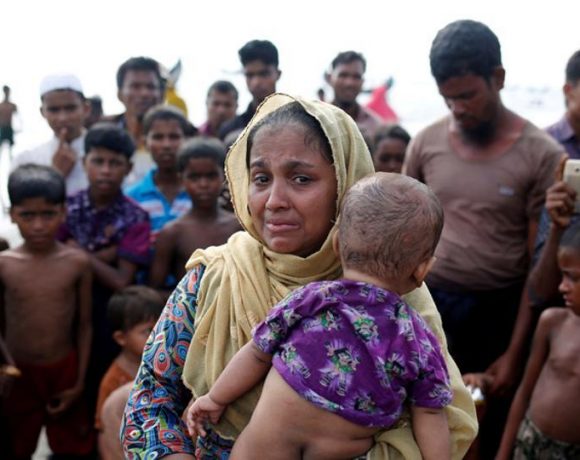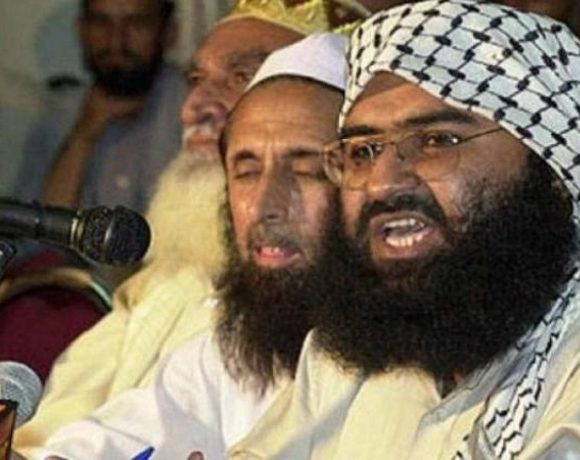

Primary Education in India is a bigger challenge today than it was before, the diverse issues emanating from many faulty policy measures coupled with a lack of political will to address are distressing & disappointing. While statistics may tell either a rosy or a disturbing trend, the ground reality is that we have not yet arrived!
We must not score political brownie points while addressing the crucial issues. If Rahul Gandhi’s predecessors (Congress Rule) took the nation backward & the present government led by Narendra Modi is yet to prove his credentials, though there are many tall promises & policy reforms in pipeline.
It is estimated that India will have 25% of the world’s total workforce by about 2025. However, in order to harness the full demographic dividend, India needs an education system which is of high quality, affordable, flexible and relevant to both the individuals and society as a whole.
More boys than girls are dropping out of the schools in India. As against 39% boys who dropped out before completing elementary education in 2013-14, only 33% girls did so, says the latest statistics of the Ministry of Human Resources and Development (MHRD). In 2012-13, nearly 41% female students had dropped out of the schools without completing elementary education, as against 40.3% male students. The gender gap in dropout within a year appears to be more profound in the upper primary classes (5-8). The figures are based on provisional data of Unified District Information System for Education.
@nishjamvwal Primary Education in India has complex problems & need urgent policy mechanism to fix #education pic.twitter.com/cDKI7lGRAm
— Indian Affairs (@Indian_Affairs) August 26, 2015
Poverty, poor academic performance, substandard teaching, migration and need for employment to support the family are major factors behind the higher dropout rate of the boys, say experts. Until now, various reports had stated that more girls in India dropped out from schools leading to launch of target schemes like Kasturba Gandhi Balika Vidyalaya. However, the fresh statistics suggest that the government needs to focus on arresting the dropout of boys as well. Overall, nearly 20% children in India didn’t complete primary education in 2013-14. Nearly 36% children didn’t complete elementary education. This is despite the fact the Right to Education (RTE) Act is in place since 2010, which mandates free and compulsory education to every child in the country up to class 8. However, it appears that the Act has led to higher enrolment but unable to ensure quality education and retention. Though the urban-rural figures and break-up of household income of the dropouts are not yet available, officials say the dropout among poor from remote and rural areas is much higher than the urban areas. Girl students are often described by educators as “more willing to learn” than their male counterparts. The overall academic performance of the girls is also better than boys as obvious from the class 10th results of various school boards, say social scientists. The new trend also points out that the girls are taking advantage of the opportunities for social and economic mobility offered to them as the country has developed. But the situation with boys is different as they are considered as the breadwinner and forced to earn at the time of crisis for instance drought, say social scientists.
Educationist Milind Wagh calls it as as “forced out” rather than drop out. “Drop out implies as if kids are leaving schools willingly. In fact, system is pushing them out of schools. In India, boys are expected to support the family. They often migrate for jobs and hence unable to complete schooling.”
……………………………………………………………………………………………………..
India is an important educational center in the global education industry. India has more than 1.4 million schools and more than 35,000 higher education institutes. India has one of the largest higher education systems in the world and there is still a lot of potential for further development in the education system.
India’s online education market size is expected to touch US$ 40 billion by 2017. The RNCOS report titled, ‘Booming Distance Education Market Outlook 2018’ expects the distance education market in India to grow at a compound annual growth rate (CAGR) of around 34 per cent during 2013-14 to 2017-18. Moreover, the aim of the government to raise its current gross enrollment ratio to 30 per cent by 2020 will also boost the growth of the distance education in India.
Market Size
The vocational education and training is fast emerging as an important area of focus, as Germany and India enhance their strategic bilateral partnership. One of India’s biggest challenges as well as advantages is its growing young population. India targets creation of 500 million skilled workers in 2022.
The need to train fresh graduates in new skills and ensure that they remain employable is important since the US$ 118 billion Indian information technology (IT) industry added about 180,000 new employees in 2013-2014, 70 per cent of which were fresh hires, according to Nasscom.
India’s IT firms are working with academic institutions and setting up in-house institutes to groom the right talent as these companies move to social media, mobility, analytics and cloud (SMAC) technologies. Tech Mahindra’s infrastructure management services academy set up in 2014 has inked partnerships with five universities to hire students trained on a co-developed curriculum.
Investment
The total amount of foreign direct investments (FDI) inflow into the education sector in India stood at US$ 1,071.5 million from April 2000 to January 2015, according to data released by Department of Industrial Policy and Promotion (DIPP).
The education and training sector in India has witnessed some major investments and developments in the recent past. Some of them are:
- EMC Corporation plans to establish 100 centres of academic excellence in India in 2015. These centres will be set up in leading IT institutes across the country to give students an opportunity to learn and practise key skills in the areas of cloud, data science, analytics, IT infrastructure and other leading technologies, as per a company statement.
- Pearson Education is on a global transformation journey graduating from its largely publishing business to expanding into school, higher education and vocational training. On the vocational education segment, Pearson trains about 20,000-30,000 learners per year in livelihood training and provides them with placement.
- To foster entrepreneurship, IIT-Bombay (IIT-B) has five interdisciplinary centres of development, a Society for Innovation and Entrepreneurship (SINE) that has incubated some 55 companies since its inception. IIT-B has also launched the Desai Sethi Centre for Entrepreneurship (DSCE) in July 2014 to foster an entrepreneurial spirit and technology innovation.
- The All India Council of Technical Education (AICTE) is working to prepare a management entrance test modelled on the US Scholastic Assessment Test (SAT). AICTE wants to attract students from some half-a-dozen Asian countries seeking admission to management programmes. The regulator is to roll out the entrance exam in Asian countries, followed by African countries and then take it global. A total of 93,693 foreign students were studying in India in 2013, according to data from the Ministry of Human Resource Development (HRD).
- The Times of India Group-promoted Bennett University has tied up with Babson Global, a wholly owned subsidiary of Babson College, Massachusetts, US, to offer programs for Indian students and entrepreneurs.
- Ford India inaugurated its fourth Automotive Student Service Educational Training (ASSET) Centre at St Joseph’s Industrial Training Institute in collaboration with Don Bosco Centre for Learning in Kurla, Mumbai, with an aim to create a pool of talented and skilled professionals for the automobile industry.
Government Initiatives
The Government of India is all set to roll out a new educational policy by 2015, according to Ms Smriti Irani, Union Minister of Human resource Development (HRD), Government of India.
Some of the other major initiatives taken by the Government of India are:
- The Government has drawn up an ambitious roadmap to enhance skill levels of millions of people. The plans involve integrating skill enhancement and entrepreneurship in the syllabi at the school level, setting up of 2,500 multi- skilling institutions in the public-private partnership (PPP) mode, and set up institutes of entrepreneurship development in various centres including upcoming smart cities among others. India will have to skill 120 million people in non-farm sectors, with the highest requirement of skilled labour to come from the construction sector (31 million) followed by retail (17 million) and logistics (12 million), according to estimates between 2013 and 2022. A National policy on skill development and entrepreneurship will be finalised by March 31, 2015.
- The Government of India plans to open a first-of-its-kind national vocational university that will subsume all Industrial Training Institutes (ITIs), a move to improve standards and bring uniformity among the schools that supply workers to the manufacturing sector.
- A memorandum of understanding (MoU) has been signed between Foundation for Innovation and Technology Transfer (FITT) and Security Printing and Minting Corporation of India Ltd (SPMCIL). The MoU has been envisioned to foster collaboration on research, training and professional development and exchange of technical expertise in areas of mutual interest such as material sciences and testing capabilities.
In addition, Government of India restructured its teacher training system, doubling its duration to two years and mandating a six-month internship as part of it, in an effort to improve the quality of teachers and, by extension, education.
Road Ahead
Various government initiatives are being adopted to boost the growth of distance education market, besides focussing on new education techniques, such as E-learning and M-learning.
“Hiring quality talent will be a focal point, and the use of non-traditional methods for recruitment like mobile technology will be one trend to look out for in 2015. Also, we will see a move towards hiring for particular skills as opposed to capacity or just numbers,” said Mr Richard Lobo, Vice-President and Head of Human Resource Development units, Infosys.
Moreover, availability of english speaking tech-educated talent, democratic governance and a strong legal and intellectual property protection framework are enablers for world class product development, as per Mr Amit Phadnis, President-Engineering and Site Leader for Cisco (India).
The Government of India has taken several steps including opening of IIT’s and IIM’s in new locations as well as allocating educational grants for research scholars in most government institutions. Furthermore, with online modes of education being used by several educational organisations, the higher education sector in India is set for some major changes and developments in the years to come.
…………………………………………………………………………………………………………..
The visible challenge: Inadequate inputs
If you ask teachers or officials about the biggest challenge for improving learning outcomes they will probably point to the numerous gaps in the system. Some schools continue to lack adequate infrastructure; several states still face a severe shortage of teachers. Many will complain about the poor quality of institutional support for teachers’ professional development. The usual assumption is that if these gaps are filled, children will learn and learn well. This “theory of change” explains the push from within the government as well as from outside to ensure the timely provision of adequate inputs, and to point out the urgent need to build institutions that support schools and teachers.
The invisible challenge: Children falling behind
But there is another less visible, but dangerously debilitating and potentially worsening problem that plagues Indian classrooms. This may be at the root of why children are not learning. Going back to the typical fifth standard classroom, try to imagine the challenge for the teacher. In our typical school, the fifth standard teacher uses the fifth standard textbook, trying to cover the material and activities that the textbook lays out. But whom should she teach? And how should she do it? Should she focus on those children who have basic skills, who are more likely to attend school regularly and, are therefore, easier to teach? What should she do with the other half of the class who are not even at standard one or two level? This is a problem faced by almost all primary school teachers. Try to imagine the daily challenge for the teacher in her classroom. Try to imagine what this “low learning trap” does to children.
Sadly, it appears as though educated citizens, education experts, planners and policymakers, Union, state and local governments do not see this problem. A typical Indian school focuses on completing the curriculum and is not structured to provide extra help to children who are not moving ahead at the expected pace or to those who are falling behind. Without the learning support that is critical, a large fraction of Indian children slip through the cracks. The problem is made worse by textbooks and curriculum whose pace and content accelerates through the primary school years. A paper by Lant Pritchett and Amanda Beatty in 2012, titled The Negative Consequences of Overambitious Curricula (www.cgdev.org/files/1426129_file_Pritchett_Beatty_Overambitious_FINAL.pdf) lays out the issue very well—“If the official school curriculum covers too much, goes too fast and is too hard compared with the initial skill of the students and the ability of the schools to teach this can produce disastrous results. An overambitious curriculum causes more and more students to get left behind early and stay behind forever”. Unlike problems of access and inputs that are visible, the situation of low learning worsens quietly within classrooms and schools and is invisible to the world outside.
“Teaching by level”
What has been done so far to tackle this less visible problem? During the last century, schools all over the world have been organized by age and grade. According to their progression in age, children move from one grade to the next, regardless of the underlying learning composition of students. What if we were to tweak this organizational principle of schools, and group children by level of learning rather than by grade? Would these changes in grouping accompanied by appropriate changes in instruction lead to more effective teaching situations and better learning outcomes?
Using the principle of “teaching by level”, several large-scale experiments have been tried in recent years in India with promising results. In June 2008, the Bihar government conducted month long “summer camps”. Children enrolled in standards three, four and five who were not yet at standard two levels were targeted for the camps. At the camps, children sat in groups with other children of the same ability level, regardless of their age or grade. Each instructor had children who were at the same learning level and used appropriate materials and methods for that level. The idea was to start with where the children were and use free time in summer holidays to move them towards where they needed to be. The modest goal of the summer camp was to bring all these children who had fallen behind to at least a standard two level. Although the camps were hurriedly organized, an external, randomized, evaluation by the Poverty Action Lab of Massachusetts Institute of Technology showed significant improvements in learning for the targeted children who attended the summer camp. More noteworthy is the fact that gains the summer camp children made were sustained even two years later.
Other states have incorporated the “teaching-by-level” concept into the normal working of the school during the school year. Between 2009 and 2011, Punjab government implemented a state-wide programme to improve basic learning outcomes. Two hours during the school day were set aside for this purpose. During this time, children from standard one to five were grouped by their learning level and existing teachers were assigned to the groups. Teachers were trained to use appropriate methods and materials with each group. As each child progressed, she or he could move into the next group. Clear goals, strong training, mentoring and monitoring for teachers, systematic assessment and periodic review helped to ensure the programme delivered results.
During the last school year, in two districts in Bihar (Jehanabad and east Champaran) and another two districts in Haryana (Kurukshetra and Mahendragarh), similar interventions were implemented by the district administrations. For example, in Jehanabad, in August 2012, of the 16,000 children who were assessed, only 30% of standards three, four and five could read simple paragraphs or short stories. An evaluation showed that the number rose to 72% by the end of February 2013, despite many discontinuities due to holidays in that period. Further, the Jehanabad effort also led to increased attendance in schools, increased parent awareness not just about schooling but also about learning, a visible energising of the entire school system, and improved school functioning. These experiments have led the Bihar government to think about a scale up in the 2013-2014 school year.
Achieving learning for all
To address the challenge of teaching-learning in primary grades we must make concerted efforts to tackle three issues. To help all children in standards three four and five reach the level expected of them at their grade, there is a dual challenge: first, basic skills need to be built, and built fast and in a durable way. Second, these children have to be enabled to be able to cope with what is required of them for the grade in which they are studying. Finally, to alleviate this dual challenge in future, by the end of standard two children need to have developed foundational skills of reading, writing, critical thinking, arithmetic and problem-solving. Of course, it can be argued that grade level expectations need to be reviewed so that the “negative consequences of overambitious curricula” can be minimized, but curriculum reform is a long drawn out and complicated process. In the meanwhile, we should not allow children to finish standard five without very basic skills that will enable them to go forward in the education system and in life.
The education chapter in the 12th Five-Year Plan document places children’s learning outcomes at the centre of the stage. The spirit of the RTE Act also is to “guarantee” that by the time children complete eight years of schooling, they are capable of dealing with whatever lies ahead for them. The prevailing belief among decision-makers is that increasing inputs, improving infrastructure and “tightening systems” will lead to the desired changes. While the input-based and “business as usual” “theory of change” may be necessary to achieve “schooling for all”, it will not enable India to reach the goals of “learning for all”. Like the cases described above, it is essential that we take a close look at solutions that have been implemented and found to be effective and successful. In each of these cases, a fundamental departure from “business as usual” was needed along with a major shift in the usual mind set of the decision-makers and implementers. Setting of clear and achievable goals, grouping children by ability instead of age/grade, supporting teachers, conducting systematic basic assessment, and steadfast leadership have enabled government school teachers (and their cluster coordinators, block and district officials) to achieve results in six months that they had not been able to catalyse in the last four to five years.
The way forward
Almost all children in the 6-14 age group in India are enrolled in school. In the coming school year, we must undertake concrete steps for putting India’s children on the path of achieving the full potential of their capabilities. Each state must publicly declare their learning goals and articulate concretely their plans for achieving higher learning outcomes for at least the next two to three years. It is urgent that we face our realities squarely to fulfil children’s hopes for the coming school year and enable India to reach its national goals for growth and equity.
References : Sources in IBEF, Statistics
Ms.Nisha JamVwal, Luxury Brand Consultant & Columnist & Luxury Brand Consultancy
Nisha is the Luxury Consultant for Zoya , a Tata Brand and has been a soft ambassador with Diago, Carlsberg, Swarovski, and done branding events for Natures Basket, Lancome , Jaguar Landrover, Zoya by Titan & other International brands. Nisha is on the advisory board of Design Institutions like Garodia School of Design & BD Somani School Of Design. Television Anchor, Compeer & Celebrity Model Endorsements. Nisha has hosted ‘Home Shanti Home’, ‘Meri Seheli’ on Star one, and Star TV, and hosted several stage extravaganza’s like ‘India On Canvas’ , ‘Paramparik Karigaar’ & ‘Khushii’. Nisha is an Interior Architect/ Designer who designs, remodels & refurbishes residences, prominent offices & restaurants. A professional Interior Architect studied at Long Beach California, Nisha has designed Jaipore Airport & celebrity homes worldwide including Lisa Ray & Zeenat Aman’s apartment, her work has been profiled and featured on the covers of design magazines worldwideKnown for minimalist & flamboyant work, she thinks out of the box, enjoys textures and natural stones in her work. Homes , airports, offices , beach houses & restaurants breathe her vibrancy & she is a specialist in quick make overs of homes, which entail short quick re-vamps without going into breaking and major re-modelling.
Nisha JamVwal, Renaissance woman of the arts & design, is arguably one of the only women in our country who is a successful interiors architect that wielded her baton onto all creative media, breaking down dividing walls between what she calls different ‘avtaars of the arts’ with her trademark Flamboyance. She is a famous writer & columnist and is known for her love and encouragement of students in the world of design.
“I am an aesthete, a lover of the arts and a luxury consultant who has chosen to work with all media of design and art, modelled and compeered shows on stage & Television. I have multitasked to always give a shot in the arm to all the things I do, and broken the walls between all creative worlds in design, fashion, interior architecture, writing, art, and not really needed to piggy back to success upon other successful people. I sit on the board of institutions, judge at Design institutes, write columns, and owe it to my work, education & a career in design and art and entrepreneurship – the ability I have to dream and work toward dreams.
for me design , shapes, forms have been attractive since I was three or maybe before even, I almost cannot see a space or fabric or canvas without my mind and vision clicking with ideas to enhance it to its aesthetic best in accordance with my vision. Sometimes there is an upsurge of ideas; I find it difficult to keep pace with my mind. Every experiment in life has been a step in my journey of growth and self-discovery, a kaleidoscopic part of life that enriches the fabric of my work & existence” says, Nisha JamVwal


















